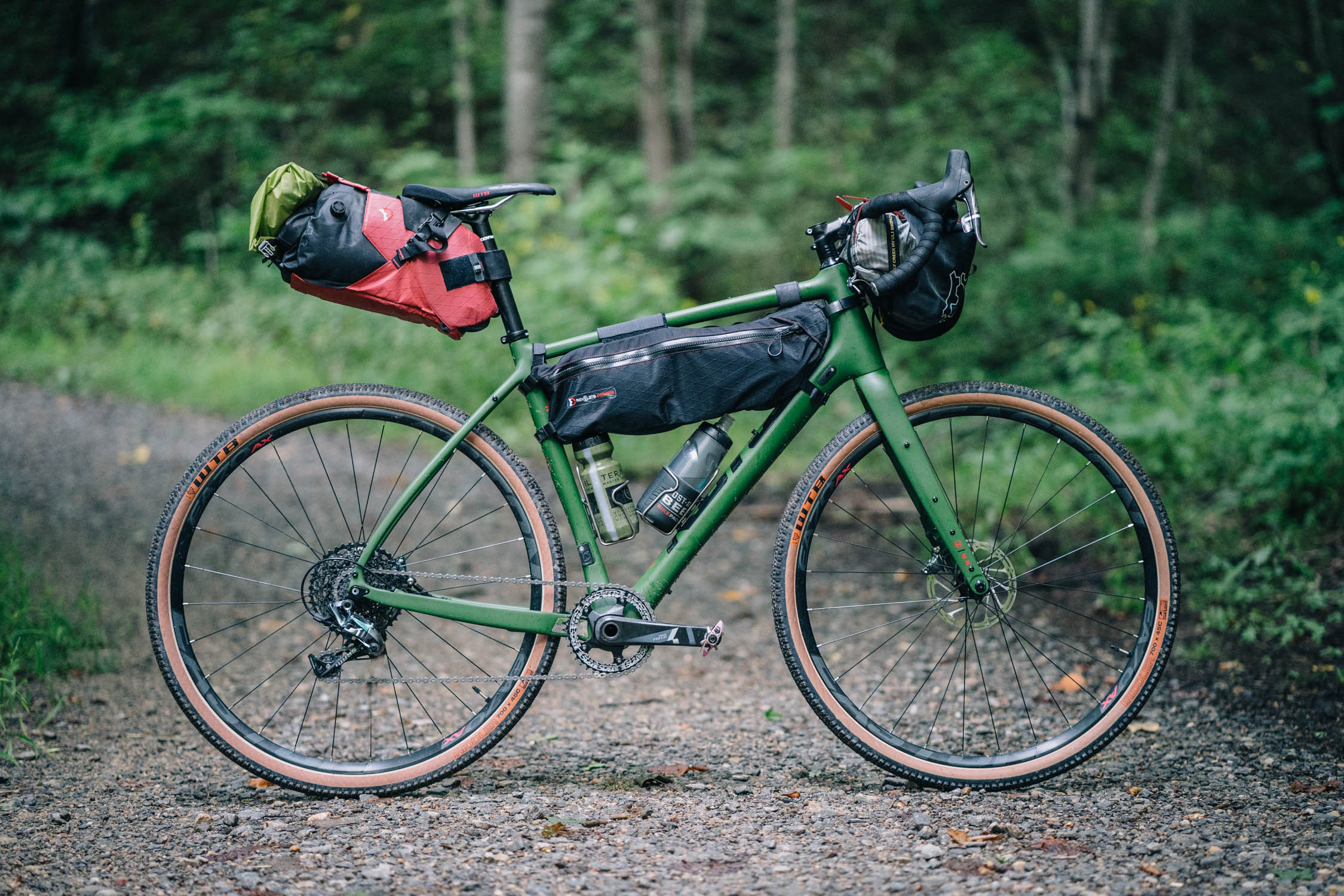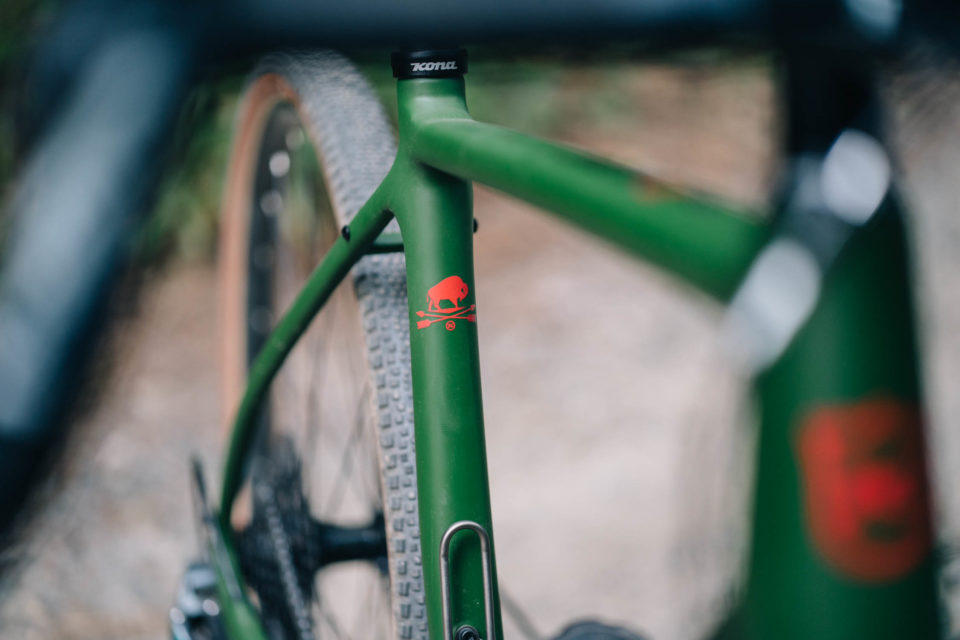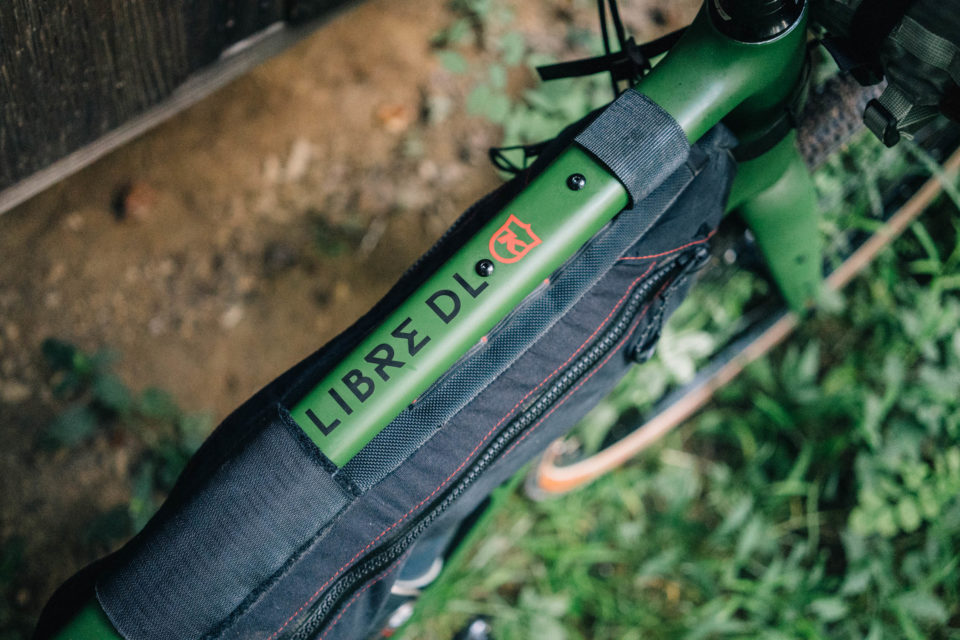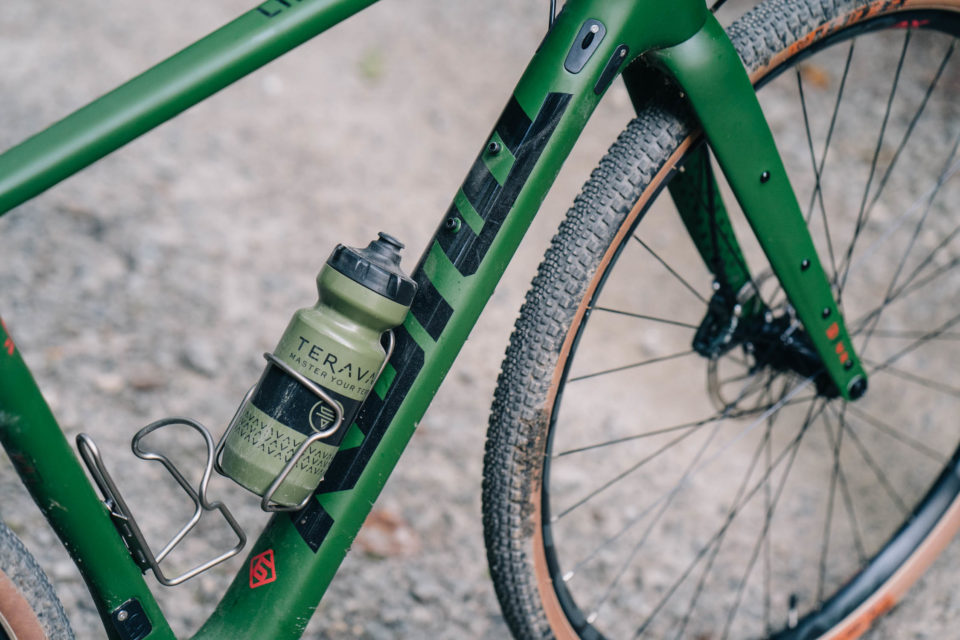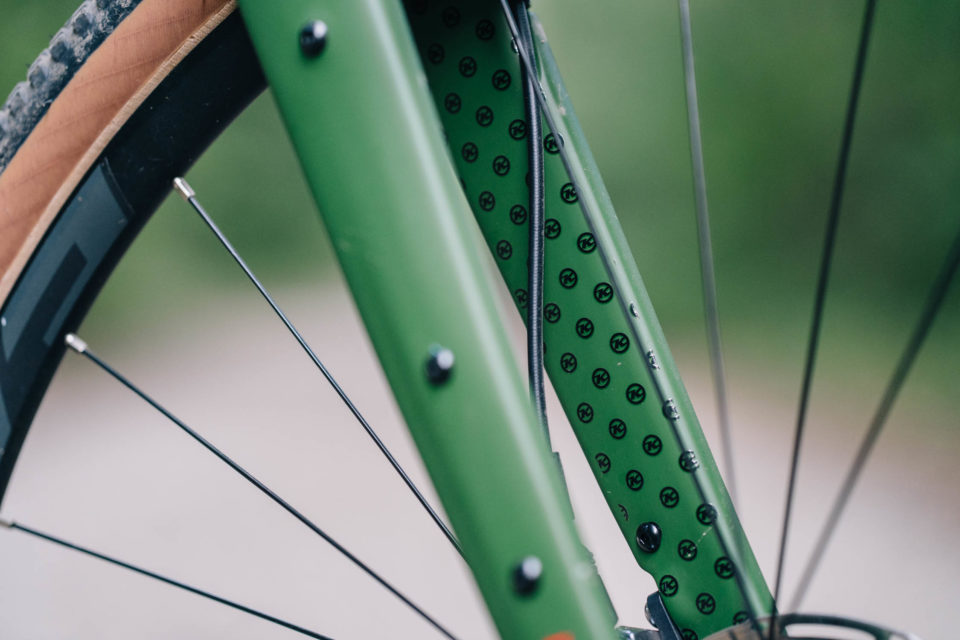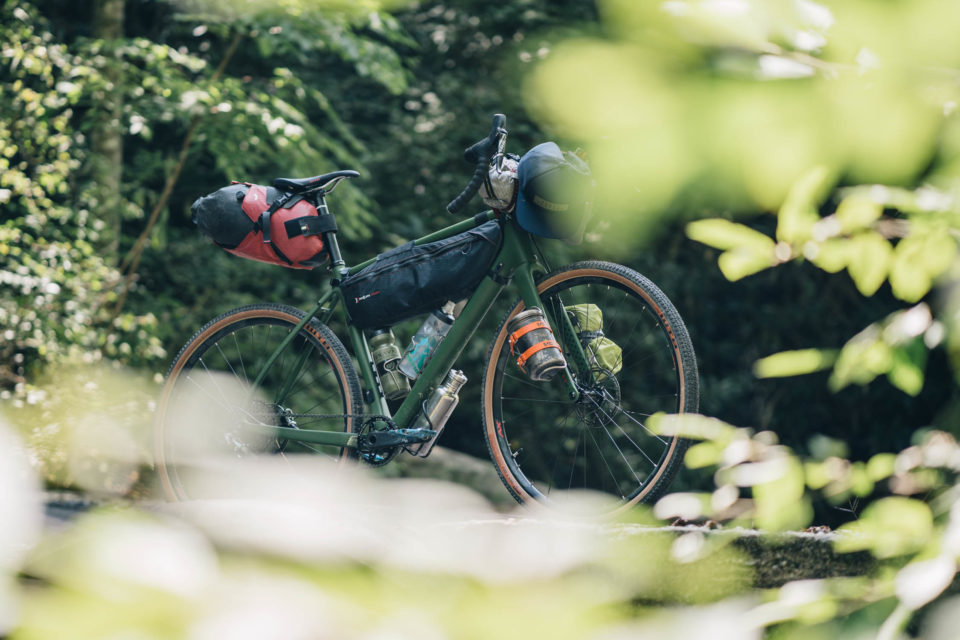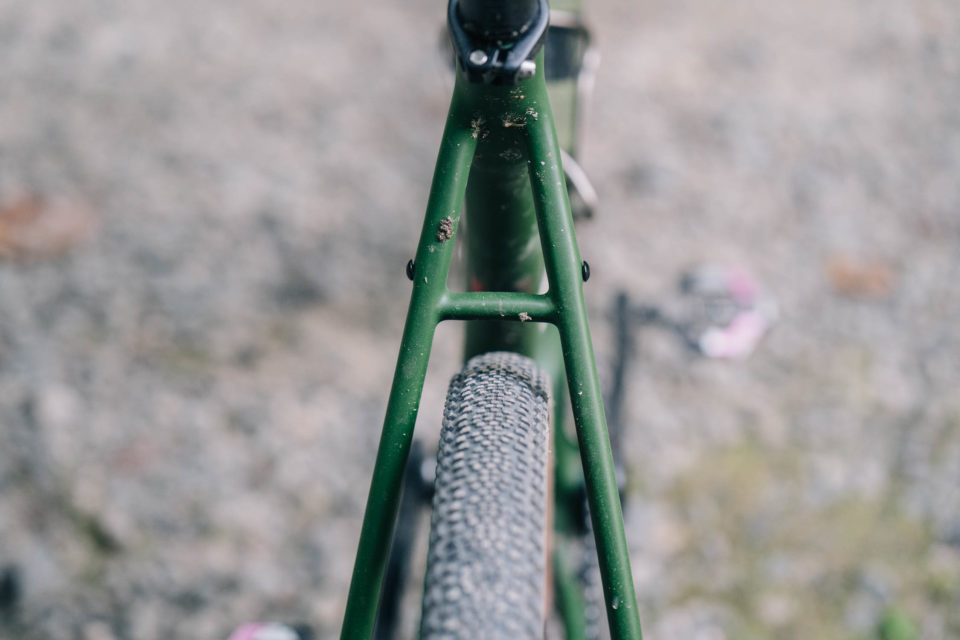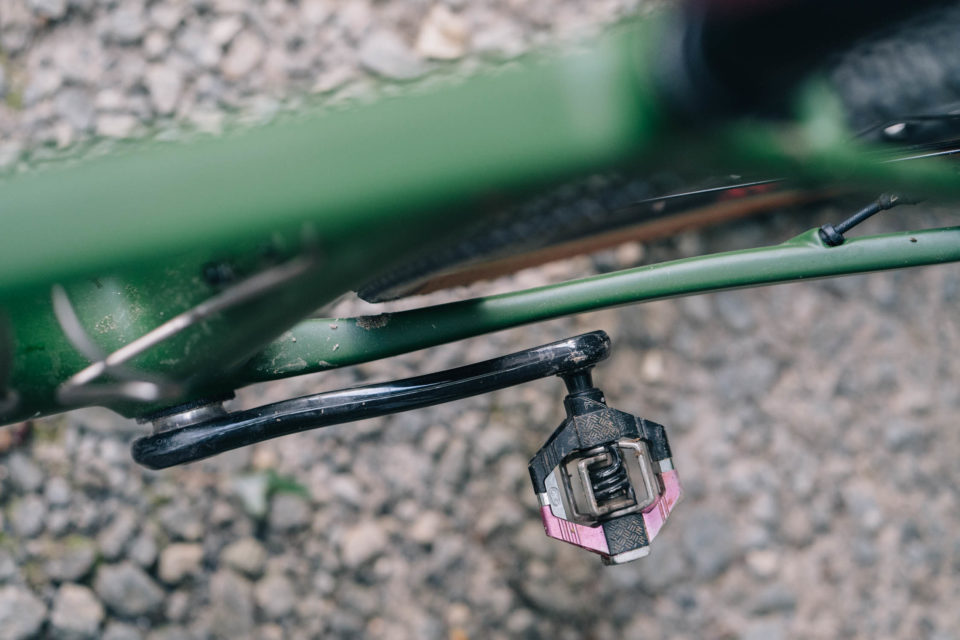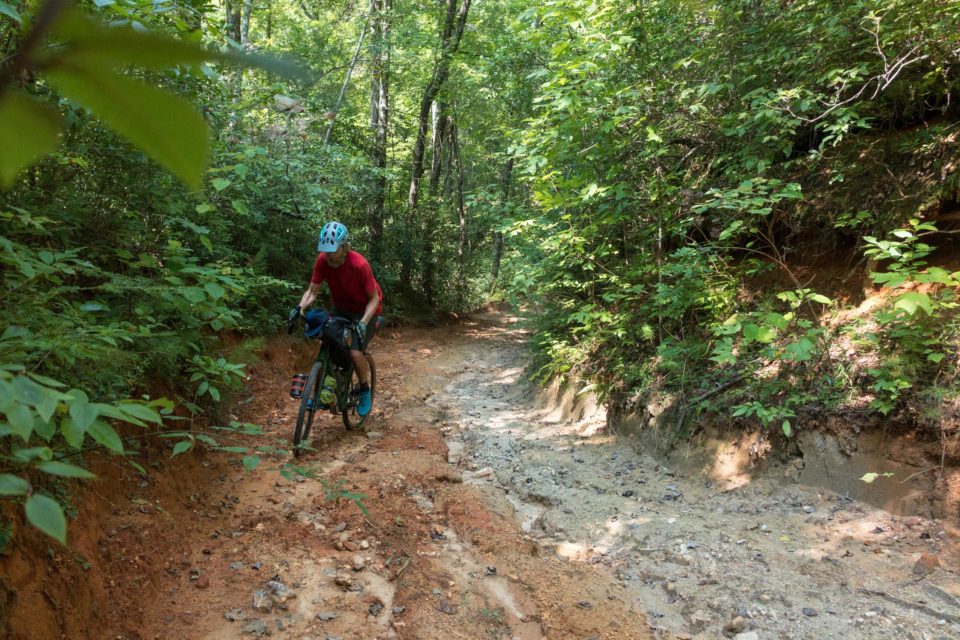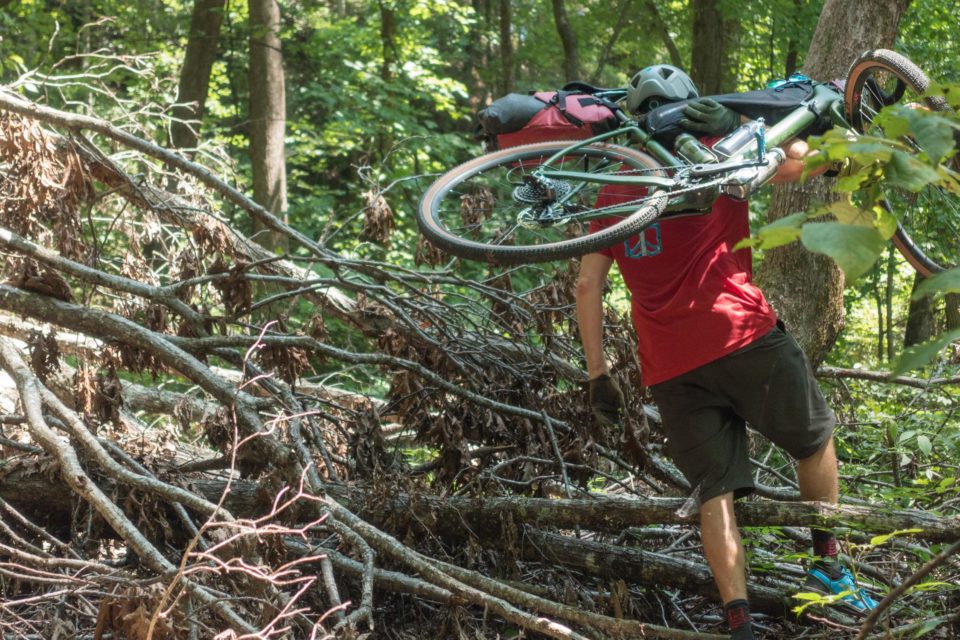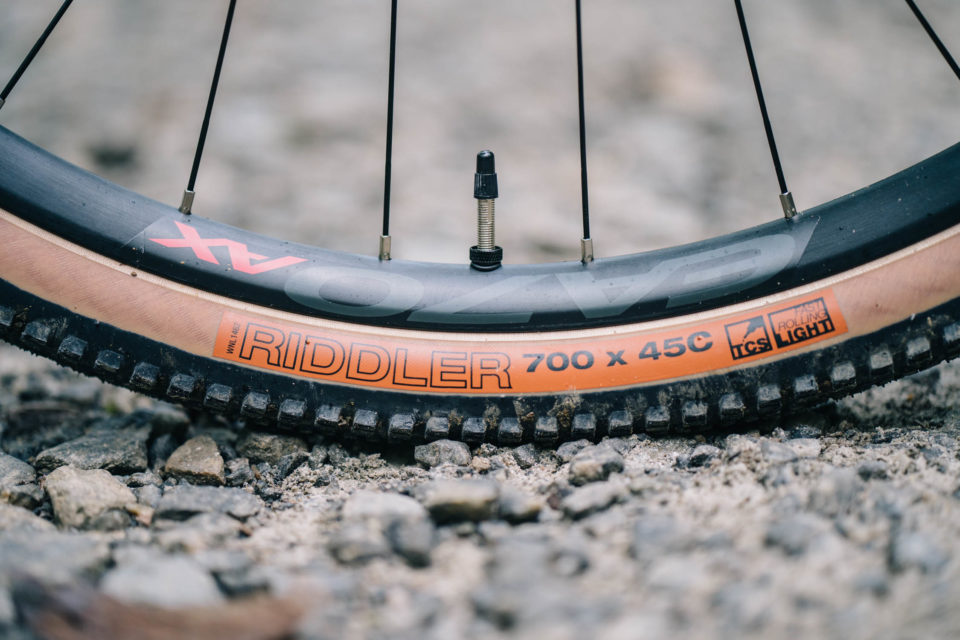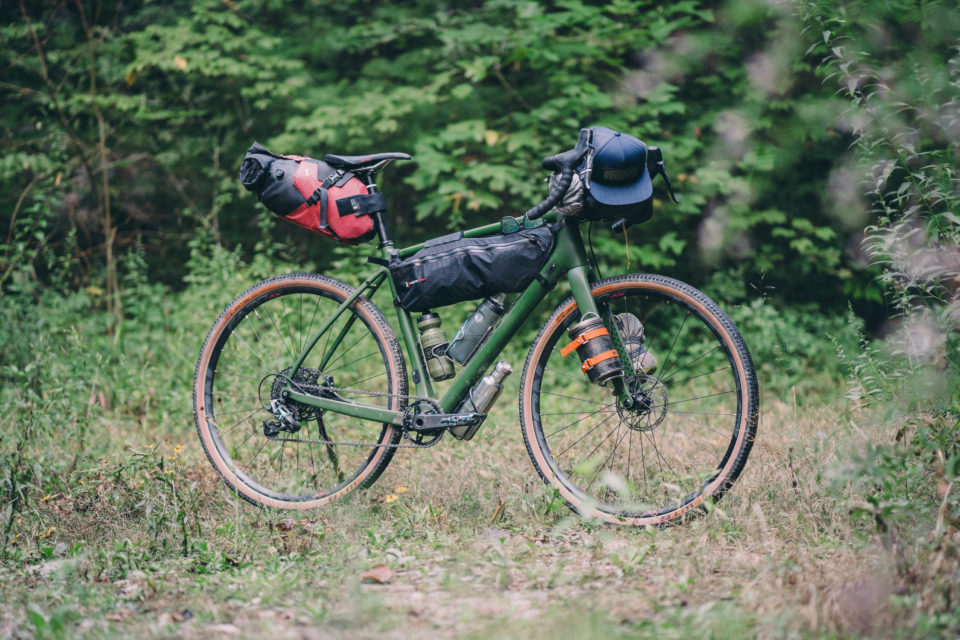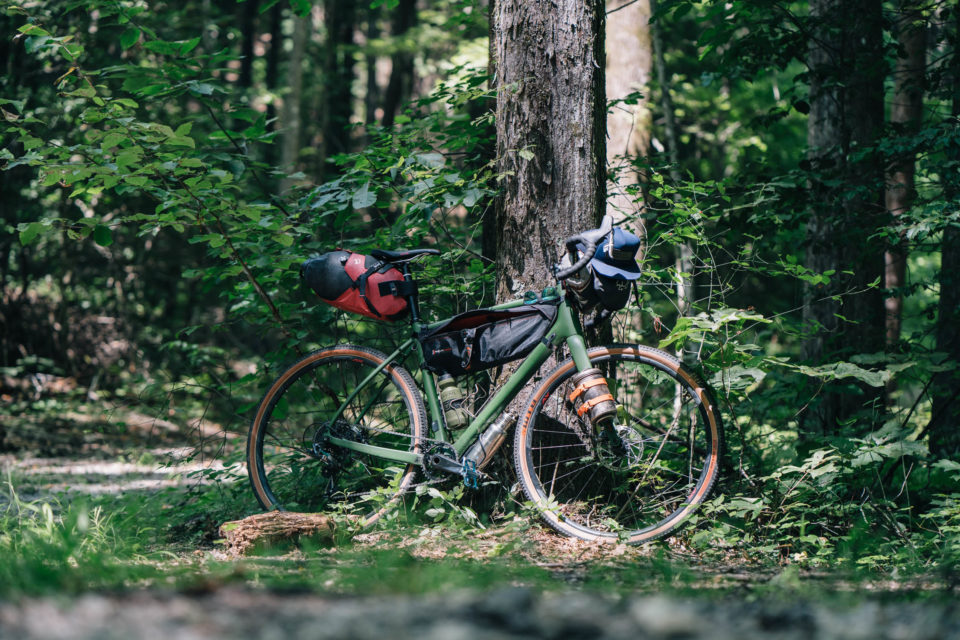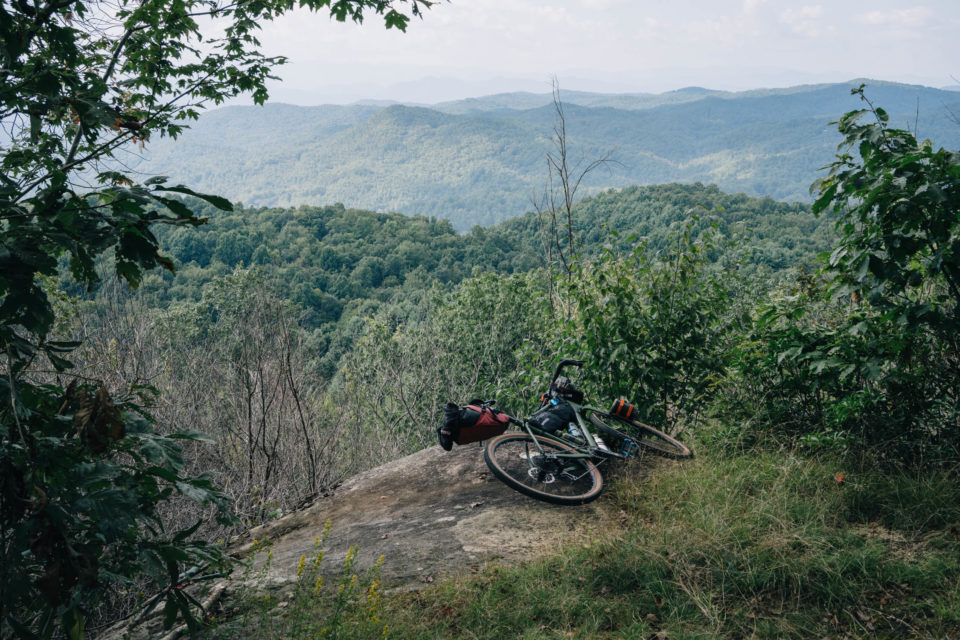Kona Libre DL Review: Gravel Priorities
Share This
This past summer, Kona slipped yet another drop-bar gravel bike, the Libre, into their lineup. So, where exactly does it fit into Kona’s already versatile range? We tested the Kona Libre DL on countless rides and multiple bikepacking trips to find out. Here’s the full review…
First, the elephant in the room. Why is there another insanely lightweight carbon gravel bike on review here? After all, a good percentage of our readers—and writers—appreciate the no-nonsense reliability of steel and the invincibility of titanium when it comes to touring and adventure riding. The reality is, bikes like this are becoming increasingly relevant to a lot of people. A carbon gravel bike such as the new Kona Libre can be up to 48% lighter than other rigs often used for bikepacking. That alone grants it the potential to cover a lot of ground quickly and efficiently when minimally packed. Thus, bikes like the Libre, Salsa Warbird, and Bombtrack EXT-C are particularly interesting to gravel racers and riders whose priorities aren’t big overseas adventures. Those who ride gravel or commute and want a bike that can handle the occasional overnighter or weekend route that blends asphalt and two-track. Those who don’t need an apocalypse-proof, world-touring steel steed for their style of bikepacking. Plus, admittedly, these bikes are incredibly fun to ride. And they can handle much more of a beating than you might think.
How does the Libre fare when it’s loaded up in the backcountry? I took it on the forthcoming, ultra-rugged Waterfalls Gravel bikepacking route to find out. Don’t let the name of this route fool you. It’s rough, and it’s not really gravel. I probably dished out more of a beating on this bike than what it’s intended for. Everything held up well, and it generally impressed me. But it’s not without its flaws, of course. More on that later.
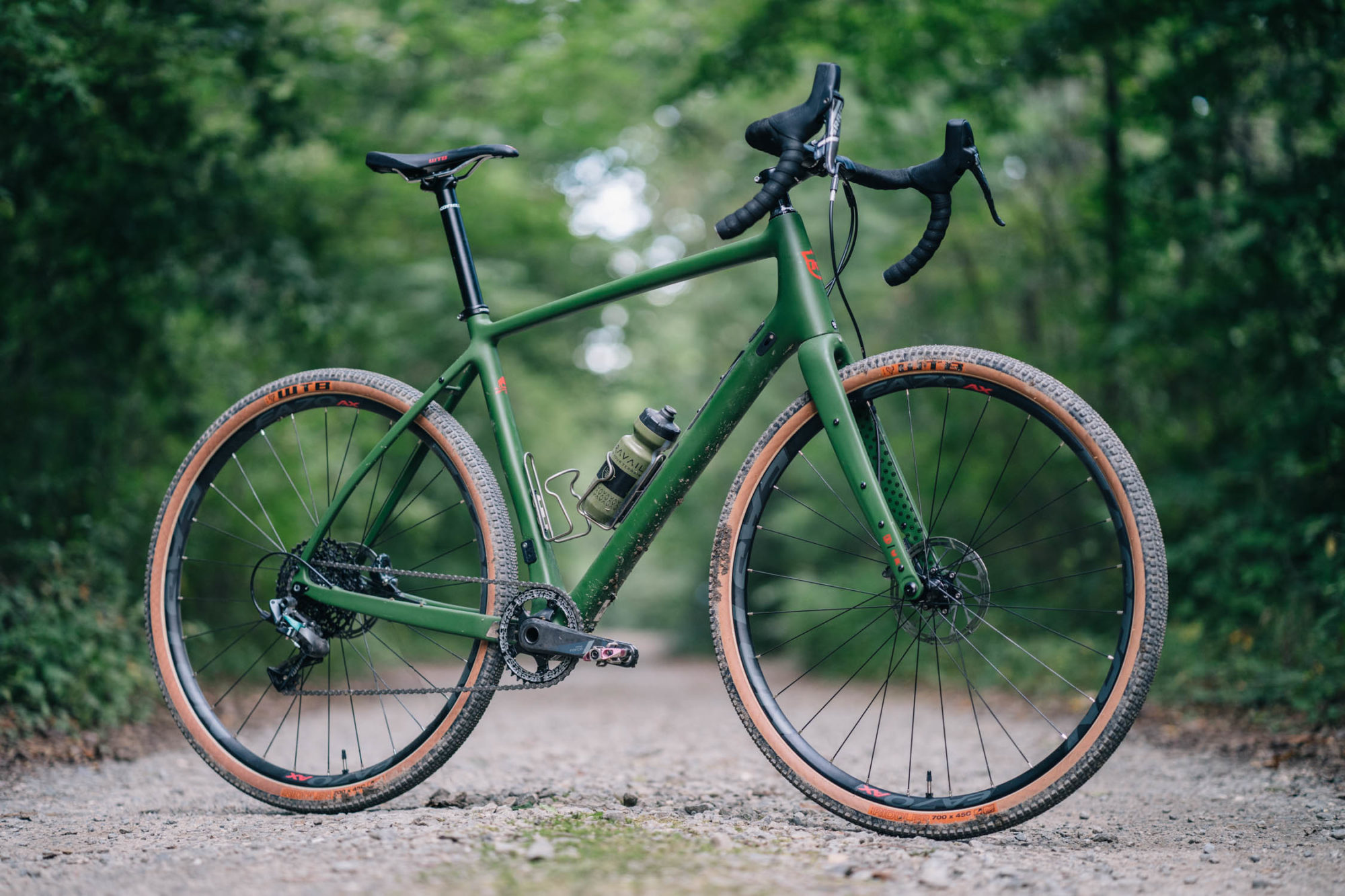
- Quick Highlights
- Angles (LG): 71° Head tube, 72° Seat tube
- Chainstay: 440mm
- Bottom Bracket: SRAM GXP PF
- Hub specs: 12 x 100mm front / 12 x 142mm rear
- Seatpost Diameter: 31.6mm
- Max tire size: 650b x 2.1″ / 29 x 2.0″
- Weight (Lg): 18.59 pounds (8.43 kg)
How light is too light?
One could argue that the frame is the at the root of effectively reducing the total weight of a loaded bikepacking rig. Many steel touring rigs are overbuilt and tend to weigh upwards of 35 pounds (16kg) unloaded. It starts at the frame, with thick tubing to accommodate heavy loads, and they’re often built with heavy-duty components. In turn, these bikes get loaded down with racks, mounts, and a lot of gear. Then again, they are designed for exactly that.
As tested, the Kona Libre DL weighs a scant 18.59 pounds (8.43 kg), tubeless. Still, it’s decked out with mounting points, which means it was engineered to carry a load. It has three bottle mounts within the frame triangle, one pair under the downtube, two pairs on the fork, and a pair for mounting a bento box on the top tube, plus, fender mounts and front and rear rack eyelets.
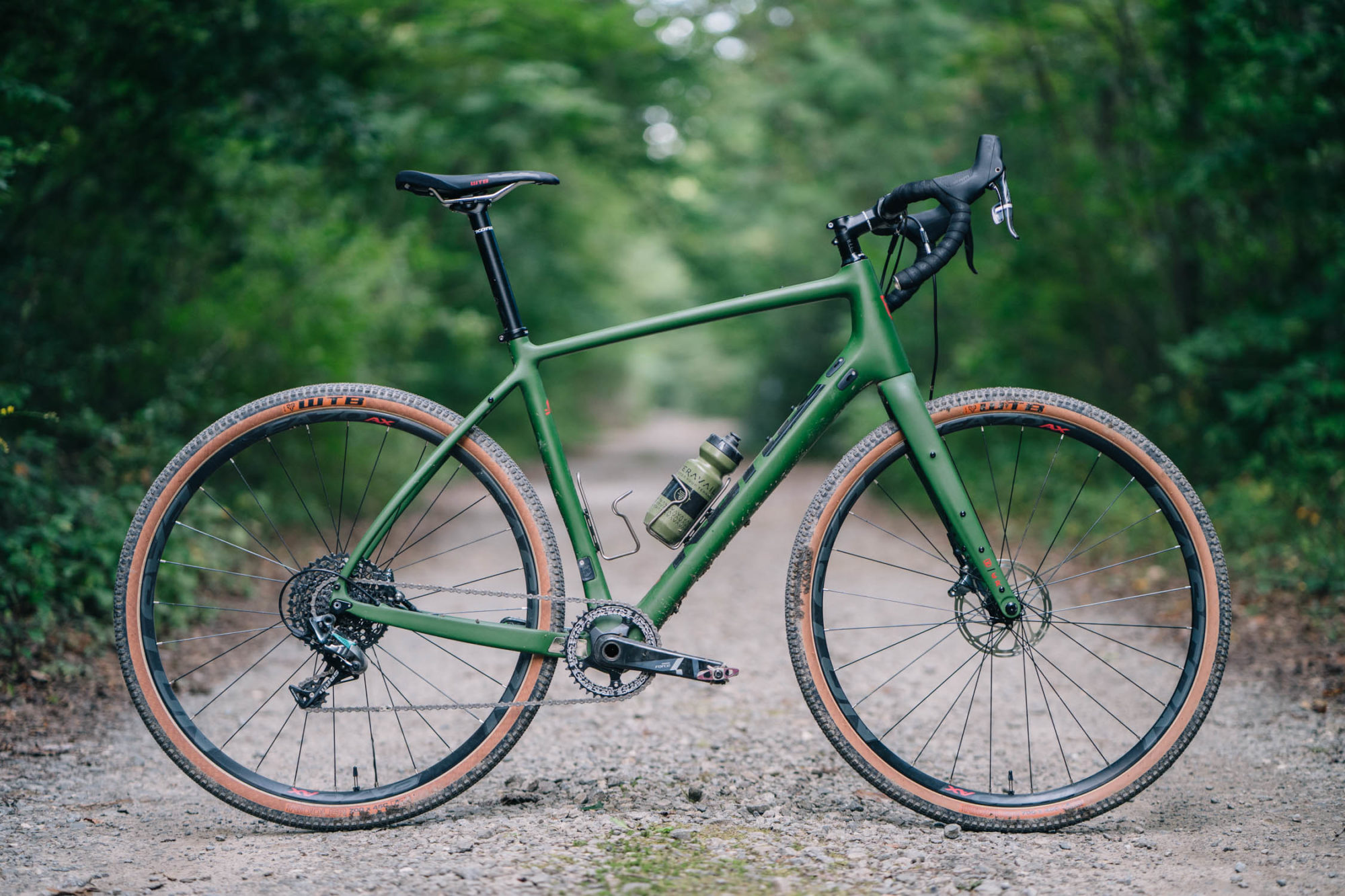
Even with all these mounts, most people might shy away from loading down a superlight carbon bike with a ton of gear. And that makes sense. Technical innovations in rackless bikepacking bags and ultralightweight camping gear options allow–and even encourage–a much more minimal style of packing for weekend trips and weeklong journeys. As such, it could be said that bikes like this one are designed with minimalist sensibilities in mind. While Kona doesn’t specify weight limits on their bikes, although they did give me the weight limit on the fork, which is designed to carry up to 10 pounds (4.5kg) of gear. I am guessing the Kona Libre frame was engineered to carry about 240 pounds (109kg), including the weight of the rider. So, say the average rider is 180 pounds, give or take, that would make it suitable for a load weight of 60 pounds (27kg)—although probably not recommended. Typically, my bikepacking gear weight when riding a bike like this one is somewhere between 15-20 pounds, not including water.
If you’ve spent any time on bike forums, you’ve probably seen Keith Bontrager’s well-known quote pop up, “Strong, light, cheap. Pick two.” This, of course, still rings true when it comes to many bike components, and a carbon frame usually eliminates the “cheap” part. But, contrary to what many fear, a carbon frame engineered for off-pavement adventure will hold up to most bikepacking exploits. It’s not like you’ll be hucking off eight-foot drops with a bike like this. However, in many cases, the wheelset and components that come on such a bike shouldn’t be taken lightly. If you plan to haul 20-pound loads on weekend routes from time to time, a 28-spoke wheelset will likely be fine. But, if you expect to carry twice that, and you are looking to tackle a ride from, say, Cairo to Cape Town, you might want to rethink these components. The frame will likely be fine, but the light 28-spoke wheels probably won’t.
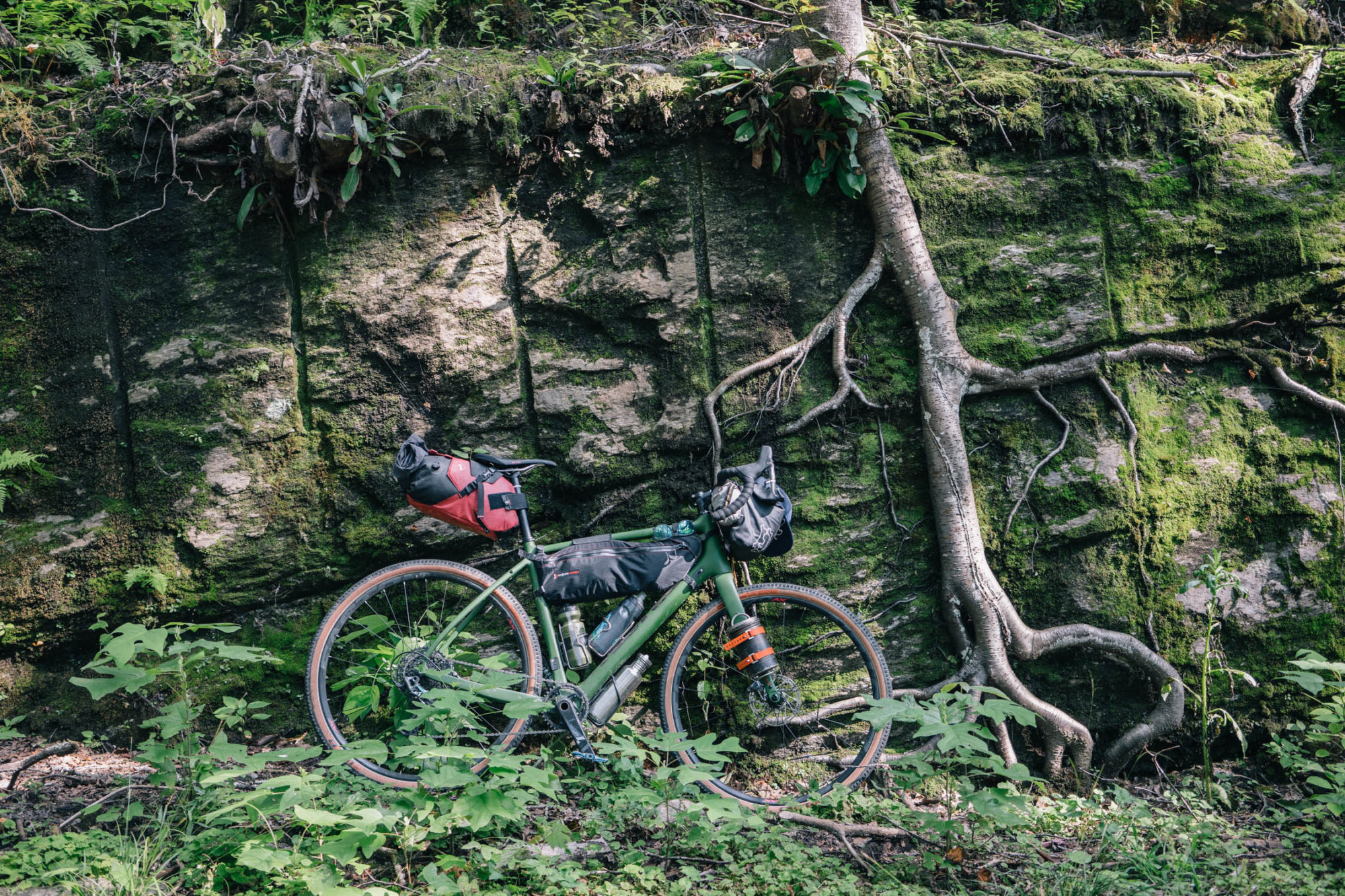
Kona vs Kona
As the Kona team sees it, the Libre was designed to be equally capable on pavement, trails, and gravel roads. Sound familiar? You might be wondering, isn’t the Libre just a carbon permutation of their esteemed Sutra LTD? Kind of, but not really. The Libre borrows a few traits from the the MTB-esque Sutra, such as a very similar stack height, reach, and bottom bracket drop, but it also takes a couple cues from the Rove, including a 5mm shorter chainstay and the narrower Q-factor 68mm road bottom bracket shell.
Like the Sutra LTD, the Libre and Libre DL were created and set up in the image of a mountain bike, harking back to Kona’s roots. For starters, it has a longer top tube than most road-oriented gravel bikes, wide 46cm handlebars, and a short 70mm stem.
With fenders mounted, the Kona Libre is designed around 700c x 45mm or 650b x 50mm tires. Without them, it can fit up to 29 x 2.0″ or 650b x 2.1″ tires. That said, as you can see in photos, the clearances aren’t too generous with 700c x 45mm tires, so it might get a little tight. The Libre is offered in two models, the Libre DL and Libre. Each has a few component differences, the biggest being that the Libre has 650b x 47mm road plus tires, where the Libre DL is set up with 700c x 45mm tires. Since the DL’s wheels and tires are taller than the 650b version, the Libre DL has a higher bottom bracket height (285mm vs 267mm). Kona positions the DL as the more dirt-oriented model, thanks in part to the added crank arm clearance.
By The Numbers
Generally speaking, bikes like the Libre adhere to a tried and true formula, playing with a few variables that change its dynamics and particular characteristics to make it excel in one way or the other. First, a gravel bike with a shorter wheelbase might handle a little quicker, whereas a longer wheelbase adds stability. Furthermore, a short chainstay (430mm and under) makes for a nimble and playful feel, whereas a longer chainstay (440mm+) might give the bike a more comfortable feel when pedaled over long days. Then there are nuances such as trail, the distance between a bike’s steering axis and the center of the front tire’s contact patch. A high trail bike might feel more stable where a low trail geometry might handle more quickly and easily, but the tradeoff might be less stability. Although, how important trail is to determining a bicycle’s handling is a hotly debated topic. And of course there are all the angles, and stack and reach numbers. This is where things get interesting. To illustrate, here are a few bikes I’ve tested in the last year and their associated numbers (in millimeters). Note that the sizing of the Libre is crazy—Kona does sizing completely different than anyone else. I rode a 54cm, which is the equivalent to a large MTB or a 58cm in most other drop-bar bikes.
| Bike (size) | Trail | WB | CSL | Stack | Reach | HTA |
|---|---|---|---|---|---|---|
| Kona Libre DL (54cm) | 65 | 1068 | 440 | 630 | 389 | 71° |
| Salsa Warbird 650B (57.5cm) | 67 | 1054 | 430 | 603 | 390 | 70.75° |
| Kona Sutra LTD (56cm) | 66 | 1070 | 445 | 618 | 390 | 71° |
| Salsa Cutthroat (Lg) | 73 | 1068 | 445 | 645 | 382 | 71° |
| Gorilla Monsoon (58cm) | 70 | 1046 | 430 | 621 | 389 | 71.5° |
WB=wheelbase; CSL=chainstay length; HTA=headtube angle
All of these bikes are in the same category, more or less. They are all drop-bar gravel bikes made with multi-day exploration in mind. However, they each occupy a particular niche. The two Salsas are made for racing, the Cutthroat for big rides, such as the Tour Divide, and the new Warbird 650B for long day rides or races like the Dirty Kanza XL. The Sutra is more fit for off-road touring, and the Gorilla Monsoon is kind of its own thing. The Libre is positioned somewhere in between racer and tourer.
With all that said, some of these numbers translate as expected, but others didn’t really deliver on expectations. Here are a few observations and comparisons from the trail.

On the Trail
Considering those numbers, one might think the Kona Libre DL would be very similar to the Sutra LTD—kind of mountain bike-ish, stable, confident, comfortable, even slow when compared to other carbon gravel bikes. I can definitely attest to its comfort. Owed in part to a relatively high stack height, the Libre places the rider in a rather upright position compared to some racier gravel bikes out there. Also, the long wheelbase and not-too-short chainstays give it a fairly solid feel for long days in the saddle. Assumptions would point to these two factors resulting in a less nimble, twitchy, and perhaps less quick, but that was not the case at all in my experience. I found the Libre to be far from sluggish. With an extremely lightweight frame and slightly shorter chainstays when compared with the Sutra, it seems as if Kona found a nice sweet spot in the middle of quickness and comfort.
“Responsive” is one of those esoteric terms often used in bike reviews to describe how a bike feels. It’s not something that can be measured or proven, really. It’s also one of those words that means different things to different people. As mentioned, the Kona Libre DL feels pretty fast. A big part of this is in the immediacy of acceleration, which is one way to define responsive. This is likely a function of a stiff bottom bracket, a stiff frame overall, and semi-short chainstays. And the massive carbon yoke and stout tubing design probably contribute to the Libre’s remarkable power transfer. Compared to all of the bikes above, I would almost say that the Libre feels the most spritely out of the gate, and it’s perhaps on par with the new 2019 Salsa Warbird 650B. It also climbs quickly and efficiently; on a couple occasions I finished my local climb up the steep gravel to Buckhorn Gap and wondered why it felt so easy and fluid.
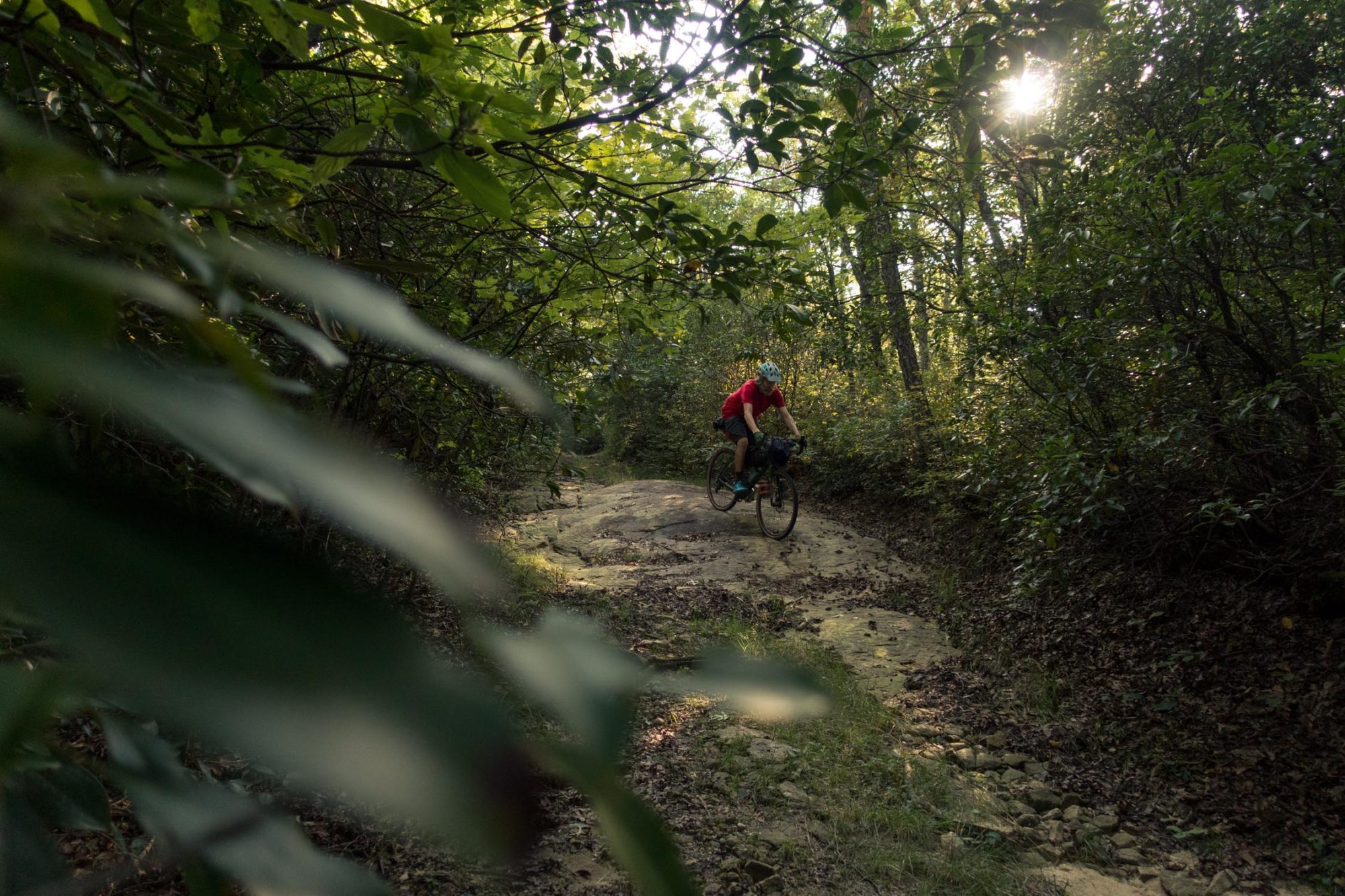
More surprising is how predictable and maneuverable the Libre DL feels when handling on the trail. Given that it has a fairly long wheelbase—relative to the current state of gravel bikes, that is—its nimbleness might also be partially due to a few MTB-esque traits like its short stem and long top tube, and perhaps that low trail number. I found it to pick apart technical climbs with a slow, controllable grace. And it feels okay on slow, techy descents as well, although not quite as good as it does climbing.
How about descending? Oddly enough, when it comes to confidence while railing fast and chunky gravel downhills, I can honestly line up all of the above bikes and put them in order based on the trail measurement. Number one, you guessed it, is the Salsa Cutthroat, which feels rock solid on fast and rough descents. Second is the Gorilla Monsoon, followed by the Sutra, which comes awfully close to the Gorilla Monsoon. The Libre DL is dead last. At times it felt sketchy when going really fast on steep gravel. Hitting significant chunky bits would occasionally feel harsh and toss the bike to one side or the other, throwing me off balance. Is it actually the slight difference in the trail measurement that causes this—the one or two millimeter difference? Probably not. This type of instability has nothing to do with wheelbase either, in my opinion. I think this characteristic is partially owed to the Libre’s overall stiffness.
So, is there such a thing as too stiff? Maybe. Even with the 45mm Riddlers set up tubeless at 18-20 psi, the Libre isn’t all that forgiving. Perhaps the Libre’s ultra-stiff frame detracts from its stability on fast descents on chunky gravel, and intensifies the rigors dished out during long days on rough terrain. The frame does a fairly good job of absorbing typical chatter and vibrations, but I definitely felt its rigidity on the Waterfalls Gravel route, especially on the Auger Hole Trail, an insanely rugged and remote “road” that traverses Headwaters State Park. But, in all fairness, the Libre wasn’t made for roads like that. Auger Hole is a place for mountain bikes, for sure. All that said, don’t get me wrong, I really like this bike, and there’s certainly a lot of over-analysis going on here. Both of these nits might be solved with something as simple as mounting slightly larger tires. The Libre has the narrowest tires of the five bikes listed above. I’d really like to try the Libre with 27.5 x 2.1” tires, as I think that might just be its sweet spot to take a little of the edge off.

Build Kit
All in all, the Kona Libre DL’s stock set of components is pretty solid. The 40T chainring specced on the crankset is a little tall for bikepacking; a 36T ring would be more appropriate with a loaded bike. I would also prefer a slightly more flared bar, such as my personal favorite, the Salsa Cowchipper. Otherwise, I don’t have any real complaints. The AX wheelset is nice, and was easy to set up tubeless. The AX rims have a 24mm internal width and pair well with the 45mm tires. They also have an offset design for added strength—and believe me, I beat them to no end. The SRAM Force drivetrain and brakes are solid. And the entire build as specced is notably lightweight overall.
- FRAME Kona Race Light Carbon (Matt Eco Green w/ Gloss Black & Lipstick Decals)
- SIZES 46, 49, 51, 54, 55
- FORK Kona Verso Full Carbon Flat Mount Disc
- CRANKSET SRAM Force 1 X-Sync
- CHAINRING 40t X-Sync
- B/B SRAM GXP PF
- CHAIN SRAM PC1110
- FREEWHEEL SRAM XG1150 10-42t 11spd
- Derailleur SRAM Force 1
- SHIFTERS SRAM Force 1
- BRAKE CALIPERS SRAM Force 1 Flat Mount
- FRONT BRAKE ROTOR SRAM Centerline 160mm
- REAR BRAKE ROTOR SRAM Centerline 160mm
- BRAKE LEVERS SRAM Force 1 HRD
- HEADSET FSA No.42ACB
- HANDLEBAR Kona Road
- STEM Kona Road
- SEATPOST Kona Thumb w/Offset 31.6mm
- SEAT CLAMP Kona Clamp
- GRIPS Kona Cork Tape
- SADDLE WTB SL8 Pro
- FRONT HUB Easton EA 70AX 100x12mm
- REAR HUB Easton EA 70AX 142x12mm
- SPOKES Easton EA 70AX Wheelset
- RIMS Easton EA 70AX Wheelset
- FRONT TIRE WTB Riddler TCS 700x45c
- REAR TIRE WTB Riddler TCS 700x45c

Pros
- Nice geometry that hits a sweet spot between comfort and performance—surprisingly nimble, climbs extremely well, and feels exceptionally fast on gravel and pavement.
- Tons of mounts, including five pairs of bottle cage mounts.
- Solid component spec with no significant shortcomings.
- Unbelievably lightweight carbon frame with a nice color and graphics scheme.
Cons
- Geared too low for bikepacking out of the box—a 34 or 36T chainring will be a necessary upgrade for most mortals with the 700c/45mm tires.
- Fork bottle mounts are not spaced correctly for a triple mount cage or bag—the bottom one is spaced a little too low.
- Somewhat tight tire clearance in the chainstays when running 45mm tires, and 27.5 x 2.1″ from what I can gather.
- Kona Road Bars are nice and wide, but I’d prefer a little more flare, such as a Cowchipper for this style of bike.
- Model/Size Tested Libre DL, 54cm
- Weight (as tested) 18.59 pounds (8.43 kg)
- Rider Height/Weight 170lbs/6’0″ (77kg/1.83m)
- Price $3,999
- Place of Manufacture Taiwan
- Manufacturer’s Details KonaWorld.com
Wrap Up
As with 99% of the bikes reviewed here, I took my time with the Kona Libre DL and put close to 1,000 miles on it in order to try and figure it out. Ultimately, I really like it, and had to get pretty nit-picky to figure out what I didn’t like. It’s not without its flaws, but neither is any other bike. Aside from a couple of the components I mentioned, my only small gripe is in the fast, steep, and loose descending department. It doesn’t have the prowess there that some bikes have. But this is a pretty granular issue, and as I have said in other instances, a bike can’t do everything perfectly. My personal preference would be to ditch the road bottom bracket shell in favor of a 73mm BB, like on the Sutra, and add a little more tire clearance. It would be a beast with 27.5 x 2.25” semi-slicks. Bigger tires would, in my opinion, offset the Libre’s stiffness and make it a next-level bike. But, then again, others might appreciate its quick responsiveness and the narrower Q-factor afforded by the road drivetrain.
Would I recommend one of the four other bikes over it? Maybe. It really depends on your priorities. For its rather comfortable stature, the Libre DL excels at many things—climbing, quickness, and a really solid geometry. Consequently, it would make a great commuter that doubles as a gravel bike and weekend bikepacker, or a randonneur that occasionally comes along for gavel group rides/races. Plus, it’s not too shabby to look at.
Please keep the conversation civil, constructive, and inclusive, or your comment will be removed.






